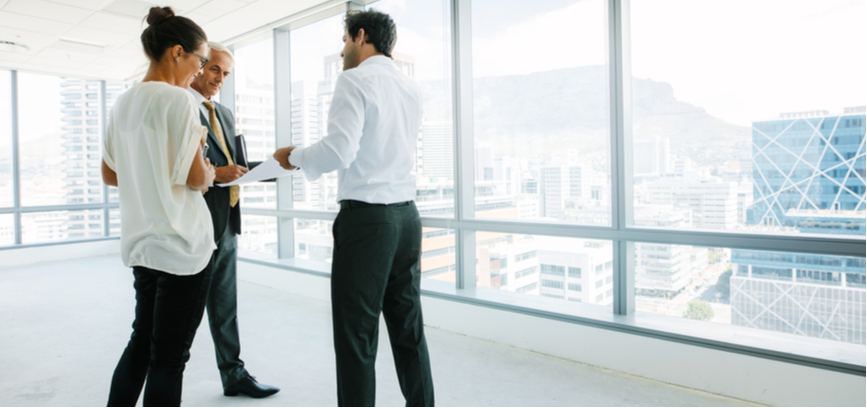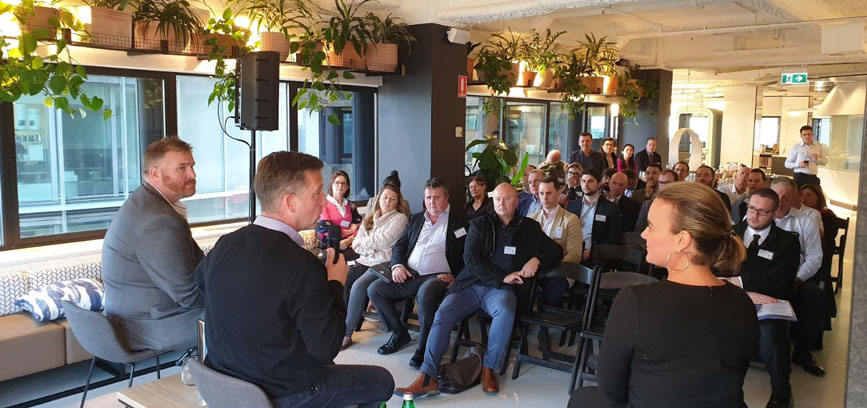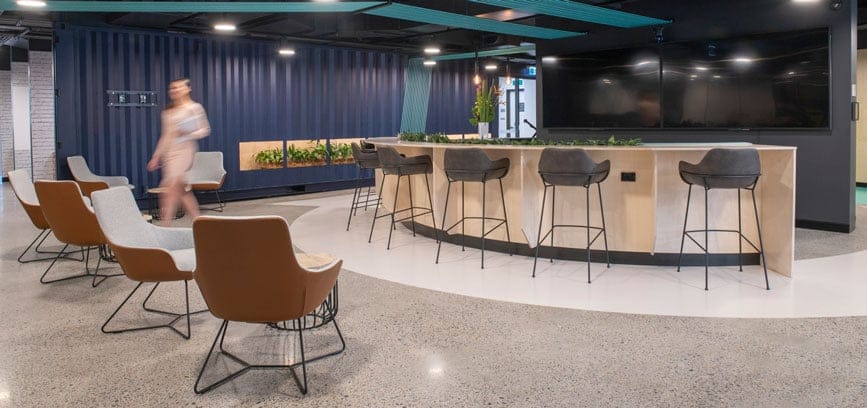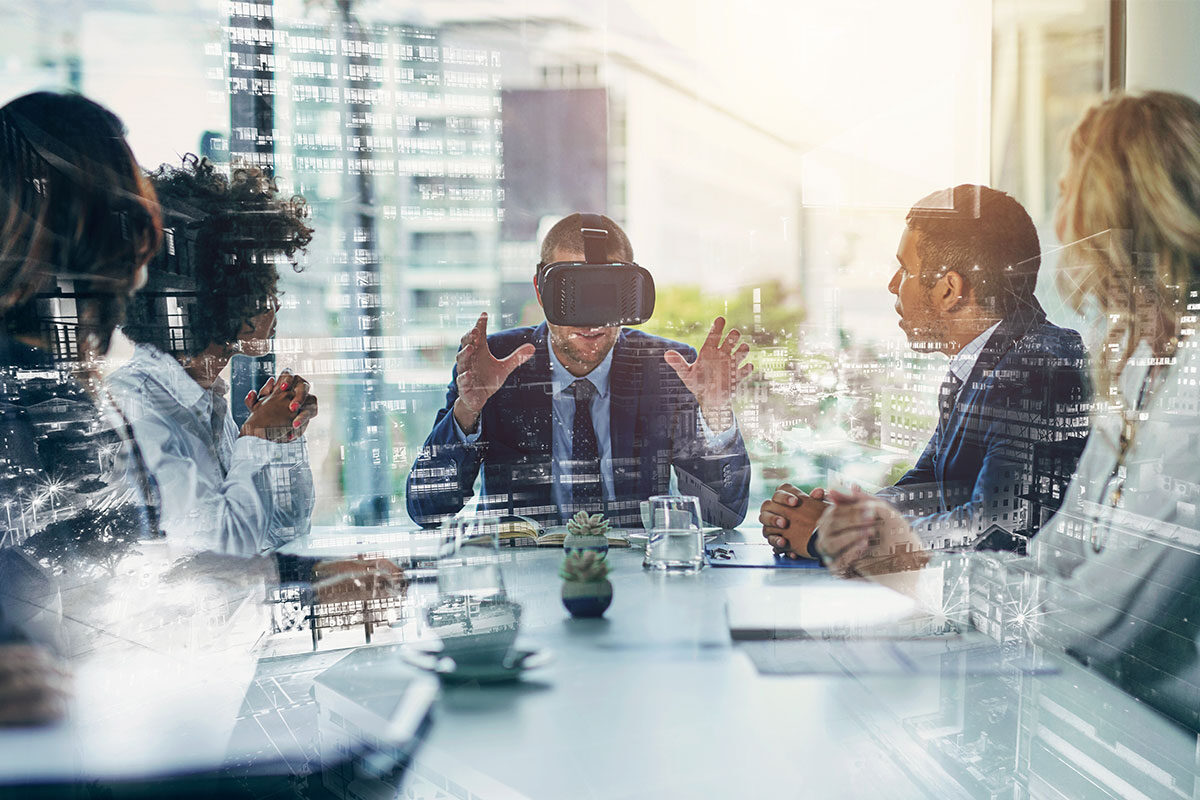How to future-proof your workplace design


What’s that saying about failing to plan? We know there are a few of them, and with good reason. Planning your office move is no different. Taking the time to make the most informed decisions can be the difference between a successful office relocation with minimal downtime and effect on productivity and an unsuccessful move that is stressful, inefficient and disruptive.
Preparing in advance will ensure your move is streamlined, both for your employees, teams and departments as well as for your clients and customers. A well-planned office move will mean a smooth transition where business-as-usual is affected as little as possible.
With this in mind, it makes sense to work alongside reliable and experienced professionals with plenty of the right skills and knowledge to ensure your office move goes off without a hitch. In this post, we’ll cover the key specialist roles usually employed in an office move and how they can help you make the best and most informed decisions when planning your office move.
Keeping your employees satisfied and attracting top-notch talent is a difficult job and designing an employee-centric workplace is one of the most important ways you can recruit and retain incredible employees. A workplace strategist will assist you to integrate the people, places and processes of your business, ensuring a productive, happy and efficient workplace.
Bringing together knowledge in facilities, interior design, real estate and IT, your workplace strategist can help you lower costs, drive workplace transformation and increase collaboration within and between teams and departments.
Undergoing major change, like office relocation, can be the perfect catalyst to hire a workplace strategist to create a holistic strategic framework from which your company can continue to grow.
An agent is a landlord representative. It’s their job to lease out space in buildings. Most commonly, they have five or six buildings in their portfolio at any time, and they represent the landlords of those spaces. Whilst they are working on the landlords’ behalf representing their client’s interests, they also seek to maximise the potential of the space to garner the best result.
On the other side sits a tenant representative, who does exactly that – they are your representative as the tenant. They are focussed solely on your needs, without being tied to a landlord, and will negotiate with both landlords and agents on your behalf. Their fee is paid by you and is usually a commission percentage based on the savings they have achieved for you.
As the name suggests, a commercial interior designer will create and direct the construction of a commercial space. From coming up with the initial concepts and floor plans, to developing a look and feel palette and 3D visuals, to directing and managing the actual rollout of the interior design, the commercial interior designer is there to guide the entire process. Not only will they design and implement interiors which match your brief, but they are also a source of expert professional knowledge around the construction process.
Understanding and entering a commercial lease is a complex and considerable undertaking. Therefore it is crucial you have considered the financial and legal implications.
It is likely your CFO’s role to look at and understand the office relocation costs as well as the ongoing lease costs and work out at what levels the business is comfortable with.
A commercial leasing lawyer will be best placed to review your lease agreement and can even negotiate on your behalf in terms of fixtures, fit-out and costs. A lawyer will also check for clauses that are not in your favour, eg. big payouts at the end of your lease or unreasonable make-good obligations.
Working with a workplace design partner like Axiom will help you to define a detailed workplace strategy to help increase productivity and support your overarching business goals. Using this as a foundation they can translate these ideas and objectives into a physical workspace that meets your needs.
A good workplace design partner starts by understanding your business needs now, and your needs into the future. They will look at your people, culture and what is currently happening in your organisation to design a workplace strategy and physical workspace that is unique to your business and based on hard evidence.
Partners like Axiom Workplaces look at the big picture and are with you throughout the journey – from design conceptualisation, planning, the fit-out itself, and, after completion, they will continue to make sure your workplace transformation is right for you and your people.
Throughout Axiom’s process, clients are supported by a highly-skilled, experienced and responsive team who nurture, develop and assume total responsibility for every detail, ensuring you are consulted at each stage of the project.
Ready to jump in? Book your free consultation with Axiom today.

An office lease expiry is one of those things that can easily get put on the backburner until suddenly it’s right in front of you. But without forethought and planning, it can end up being costly and very inconvenient!
Getting a start early is crucial whether you’re planning on staying in your current premises or relocating offices (if you are relocating, here is a helpful relocation checklist). Depending on the number of your employees, the size of your office space (current and into the future) and the complexity of your current commercial lease agreement, you should start planning at least 15-18 months before the lease expires.
Some things to remember:
So, what do you need to consider when deciding to stay and renew the current lease or move out and relocate to a new office? Let’s review the key factors:
If you’re satisfied with your current office and location and have no intentions of outgrowing the space in the imminent future, it might be more beneficial to stay and renew your lease (if you have that option available to you).
Ask these questions:
Also, think about the costs of office relocation and factor this into your decision. Consider: planning, fit-out, ‘make good’ costs, moving expenses and any loss in productivity. Weigh these up against the benefits of moving to a new location eg. lower overheads or a better location.
If you do decide to stay put there is still a need to negotiate to ensure your company gets the best deal. Consider negotiating for things like base building improvements, new interiors, rights of first offer for adjacent space for growing into or contraction rights if you see downsizing in your future.
An office lease expiry might just be the perfect time to consider how your workplace strategy fits in with your overall company goals and objectives and how your office space can support them.
Ask these questions:
The type and amount of space you require post lease expiry depends heavily on the nature of the work being carried out so considering the company’s objectives is key.
Examine your future business plans closely to help you decide whether to renew a lease or relocate your office. Think about how these plans might impact your current workplace and what they will mean for future space requirements. Reflect on whether staying put will allow your business to evolve in the right way, or if moving office will offer your business a better chance at future success.
If it looks like the future holds a dramatic change in the way your company works, or a large scale merger of departments from different offices into one, it’s best practice to engage with a change management consultant early on. Your consultant will help guide you through the process for a seamless transition with as little employee anxiety as possible.
As with most things, when it comes to an office lease expiry you need to consider the costs. Beyond thinking about lease or rent costs, it’s important to factor in all the many and varied relocation costs if you decide to move. Naturally, there are also costs associated with staying where you are, as your lease agreement may change for example.
If you’re feeling overwhelmed with all of these considerations, you’re not alone. This is where a workplace design partner can help. Companies like Axiom specialise in helping you design a workplace strategy, find your next property, manage the interior design, and transition your workforce.
Bringing in the experts ensures your business is taken care of, from start to finish. To learn more, download our free ebook How to choose a workplace design partner now.

According to a recent research report by Deloitte, the office is not getting any smaller or going away anytime soon, even with advances in mobile and digital technologies. In fact, from 1990 to 2017, the amount of total available office floor space in Australia even grew by 60%.
Technology is definitely transforming the workplace and how people work – but not the way most people think. Robots won’t be replacing everyone’s jobs. Deloitte mentions that people will still be ‘central to the future of work.’ What will change is the types of work humans do and the skills needed to succeed in the future.
At a lunch-and-learn event, we covered how technology drives workplace transformation. In this post, we go deeper into the discussion and focus on the impact of technology on the way people work:
You need to start thinking of how technology can be integrated as early as possible. According to Dan, you have to consider technology in the early stages of the process and “talk about technology today as a scalable investment.”
During an office move or refurbishment, people usually focus on where the space is going to be and what it’s going to look like. They defer technology decisions towards the end of the project – when budgets and timeframes are already constrained. This results in making some significant sacrifices on the technology front. They start cutting down on the things they wanted at the beginning. And they end up letting down the people who are going to use that work environment, ultimately impacting the level of potential productivity that could be leveraged.
So, don’t make the same mistake. Start to think about technology as a platform approach and identify and invest in what you need early.
Also, by thinking about technology early and properly communicating your needs to providers and partners, the better off you will be in meeting expectations and deadlines and achieving the outcomes you wanted at the beginning.
Technology has such a significant impact on the workplace, that it is changing the way people work. Here are some insights from our panel of experts:
People still seek human connection
With advances in mobile and digital technologies, people are now able to work anytime, anywhere. These days, people have the freedom and flexibility to work from home and outside the normal 9-5 hours.
But it seems employees still look for human connection. There is a slow shift back to people wanting to work in the office. They like meeting face-to face, looking people in the eye, shaking hands and directly engaging with colleagues and customers. Some even think that they are more productive and effective when working side-by-side with their team in the office.
Work-life harmony
Let's call it “work-life harmony” rather than balance as we all have to go to work and go home at the end of the day. Both work and home life are intertwined but it’s the communication piece in the middle that enables us to connect with our families and colleagues. Nothing can replace the element of human connection.
That’s why companies like Axiom develop workplaces that enhance human experiences and implement technology that enables harmony between work and home life – encouraging people to come back to the office. This then creates a cultural shift attracting employees of all levels, including leadership, to come in and get the work done.
Personalised service
Why would someone come to this office? As an employee, why would I want to do this? What’s in it for them? These are some of the questions that you need to consider when building workplace environments.
It’s not just about how impressive the technology is that you want to integrate. It also needs to serve a purpose. People need to see and experience the value of the service. Plus, it needs to be personalised to each individual’s need. For every inconvenience, we need to give employees two conveniences so they can start to offset one another, and they can start to see the value proposition beyond the friction.
Technology won’t be able to solve everything. There are going to be certain problems that you’re never going to be able to overcome or be able to rectify, but if you start to add lots of little things people can identify with – then they will begin to see the overall value of what you’re trying to do.
So, don’t just give your employees a desk to work on, personalise the service and make things easier for them. This would not only increase employee job satisfaction but also improve productivity and efficiency in the workplace.
This is how it all comes together; you’ve got to treat the working environment with respect and your employees with respect.
Want to learn how a design partner can help implement the right technologies to create a more productive and engaging workplace for your employees? Check out our free ebook How to choose a workplace design partner. Download it now!

“A direct impact on productivity, engagement and people’s happiness coming to work”
– Lauren, HR Manager, 1-Stop Connections
A global leader in port logistics solutions, 1-Stop Connections creates innovative products for the global market. From shipping and ports to road and rail, their suite of integrated products and tailor-made solutions aim to maximise operating efficiency throughout the supply chain.
Global logistics is fast-paced. 1-Stop are true innovators in the field and has rapidly outgrown their premises, taking on additional team members at an exponential rate. This is not set to slow down. Beginning with a staff of under 20, their team in 2018 comprised over 100 individuals with this figure set to double in the next five years. As such, they needed a space which would highlight their innovative spirit, spotlight their efficiency, facilitate collaboration and provide the scope to grow with the business.
Split across 4 floors, collaboration was waning, and the company looked to secure new premises where the connection between teams could be more readily fostered.
Axiom was invited to present their vision to 1-Stop decision-makers and was almost immediately engaged. Through a series of briefings, we brought together a team of designers, estimators, project managers and construction experts to create a visionary workspace.
With 1-Stop Connections, our team enjoyed the benefit of developing the workspace from a minimal blank canvas. We were presented with the new Redfern premises as a refurbished but older building complete with polished concrete floors, an open ceiling and industrial/warehouse vibe, all of which highlighted the initial acoustic challenges.
When collaboration is key, we need to manipulate space to provide areas which buzz and others where there is a possibility for quiet interaction. Installing the right materials to balance the environment’s sound was a challenge we addressed instantly. Part of the solution was to include a central breakout area, smaller one-on-one meeting rooms, shared spaces and 100 workstations which treated the acoustics uniquely in each area.
“Already connection is felt across the business”
– Michael Bouari, CEO 1-Stop
From inception through to the ideation and implementation of the project, the Axiom team successfully transitioned 1-Stop from their previous premises into their exceptional new workspace.
Interior design, concept development, construction management, electrical and lighting solutions, furniture & workstations and project management were all within the brief and delivered within a 12-week timeframe to budget.
The creative vision was realised as a sleek, bold, modern and dynamic space. Careful, creative and considered, we approached the project as an opportunity to sculpt a unique space. Elevating the working environment, our design incorporated leading technologies and finishes as well as beautiful natural elements to increase workplace wellness.
Working with a progressive and innovative client, Axiom was able to push boundaries and arrive at meaningful, sometimes playful design decisions to achieve a space in which the team thrive.
“A deliberate process which delivered what we wanted”
– Tony Payn, GM Finance, 1-Stop
The concept rested on weaving the company’s story into every possible aspect of the fitout. Shipping containers were recycled and used as wall finishes. Aerial views of shipping ports were referenced in flooring patterns, and graphic elements throughout the workspace paid homage to the logo.
Bright blue cables were featured throughout the space – overhead, along walls and throughout breakout spaces to encourage the idea of constant movement. A playful take on tracks, shipping lines and journey maps – these features underpin the company’s ethos of progression and dynamism.
Largely open plan, the space caters for team discussion, high-level presentations and more private consultations. A creative core was constructed in the form of a communal kitchen/breakout space and an innovation lab was created which provides the opportunity for the team to share ideas and inspiration.
Ethical, energy-efficient and low carbon footprint options were also addressed as part of the design. Throughout this project, we had sourced many local materials, used existing fittings and applied a stringent vetting process to use suppliers who worked with a considered environmental approach.
We tackled the project with a mandate to re-purpose and re-invigorate as much of their current workspace as possible. By surveying their fixtures and fittings, we were able to bring into the new space a range of furniture that we upcycled and appropriated – thus reducing waste, maximising budget and removing the need to purchase more occasional furniture. Finally, our team ensured that the space provided exemplary abilities to recycle its own waste.
“Pretty much perfect”
– Michael Bouari, CEO 1-Stop
Pumping with enthusiasm, primed for spontaneous collaboration and right at the forefront of innovation – 1-Stop Connections now have a workspace which keeps pace with their energy.
Adaptable, dynamic and providing the flexibility to grow, Axiom has created a workspace which not only fulfils the current needs of the client but nurtures them towards the future as well.
Find out how Axiom can transform your current or new office space. Book a free consultation to see what we can do for you.

Technology is changing the way we work. The current workplace is no longer a single place people go to do their jobs. With advances in mobile devices, networks and cloud computing, employees can now work anywhere, anytime with just a laptop and an internet connection.
This enables enhanced staff flexibility, collaboration and productivity never before seen in the workplace. However, to achieve the best results, companies not only need to provide the right workplace technology and tools for people to do their work but also create a working environment that caters to individual needs and preferences.
In this post, we focus on some valuable insights to help you create a workplace culture that adapts to advances in technology, and more importantly, delivers greater efficiency, productivity, flexibility and employee job satisfaction.
For a growing business, it’s important to make sure that the decisions you make today are still going to be relevant in the future, as change can happen so quickly. Here are some key actions to future-proof your workplace:
We all know that the greatest resource for any business is its people. There are two ways technology can add value to your employees and help them become more innovative and creative:
1. Customising the experience
It’s important to realise that most of your staff just go to the office to do the work they need to do and collect a pay cheque. That’s the reality. So, how can you help them to be more innovative and creative in their work? It is essential that you treat your employees with respect and understand that every employee is an individual, with their own needs and preferences.
You need to customise the experience for them. And technology plays a big role in doing just that. Tools and applications can be customised to suit employees’ life and work styles. Mobile and digital technologies can also make life easier for your staff – providing greater flexibility, efficiency and productivity. In essence, technology can give people more time to think creatively and focus on the more important things at work and in their personal lives.
2. Enhancing workplace culture
When people come together and collaborate at work, technology often works in the background and is not given much thought as it works on demand. However, technology plays an important role in enhancing the workplace culture. For instance, digital signage in the office can actually help inspire people at work. You can tell stories about the business, where it’s going and the success it’s currently having.
We’ve all experienced some sort of frustration when connecting with people via video conferencing. We hear comments like ‘I can’t hear you’ or ‘your video froze’ or even ‘connection just dropped’. So, how can you ensure the best experience?
It’s important to start with understanding your company’s communication needs. What would make it easier for them to communicate with each other? How will employees use video conferencing? Is video conferencing the best solution? Of course, you first need to make sure that the technology would be widely adopted by the different teams before you invest in improving the experience.
With the internet and Wifi connectivity becoming stronger, more stable and a lot quicker, people expect video conferencing to just work. If it doesn’t, they will find another way to communicate. We always try to find the easiest way to get things done. While video conferencing is important, it is not the only way to communicate. Businesses need to be able to offer employees a lot of choices when it comes to communication – audio, video, email and text.
Security needs to be at the core of your technological and digital initiatives. You need to understand the flow of information across your organisation. Business data could be emailed, shared on social channels or stored on the cloud in applications like, OneDrive, Dropbox or Google Drive.
But how secure is the cloud? Cloud applications are getting more and more secure plus companies are now better at implementing security protocols and measures to protect business data.
The bigger threat isn’t the cloud – it’s the internet of things (IoT). IT departments need to be more concerned about the devices, machines and apps connecting to the network. These ‘things’ connect to anything and have the ability to transfer data over a network without requiring human interaction.
Also, stay tuned for Part 2 of this blog, as we go deeper into the experts’ discussion on how technology drives workplace transformation! Subscribe to our blog to make sure you don’t miss out and also read our Guide to the Future of Work.
Want to learn more about technology in the workplace? A design partner can help future-proof your business by implementing the right technologies to achieve your long-term objectives.
Check out our free ebook 'Digital Transformation: The Role of Workplace Strategy'
